Pablo Escobar's Colombia
- Maura Jean
- Jan 20, 2018
- 5 min read
How travellers are interacting with his legacy

Ask anyone on the streets of Medellin what they think of Pablo Escobar (although I wouldn't recommend this) and you're likely to get a mixed message. There are those who resent him for giving Colombia its reputation for violence, kidnapping and drug trafficking. Then there are others who remember him as a sort of Robin Hood figure: the barrio he built on top of a dump to house the homeless, the soccer pitches he built in the slums, and the money he poured into Medellin to turn it into the cosmopolitan city that it is today. Stickers, posters and flags bearing Escobar's likeness can be bought all over Colombia. Whatever your opinion is of the man, his incredible influence on Colombian culture can't be denied. With the release of Netflix's Narcos, interest in Escobar's legacy in Colombia has increased exponentially. I happened to be travelling in Colombia in 2016 when the show had just begun and I found the conflicting views of Escobar's legacy, and the various ways in which travellers were exploiting it, fascinating.
Most of my backpacking destinations were chosen purely based on word of mouth. I had not originally planned to go to Colombia, but as I travelled more and more people travelling South told me of the incredible beauty of Colombia; the laid-back, laissez-faire attitude of its citizens; the Carribean beaches; the salsa dancing. And: Pablo Escobar. See the neighborhood he built! Play paintball in his lake house! Meet his hippos! Make your own cocaine!
It sounded insane. I wanted to see it. I rushed a bit to get some more time in Colombia and booked a flight out of Cartagena, a 16th century colonial city on the Caribbean coast.
Of course, the reason that Colombia feels so "undiscovered" is because of the recent violence and kidnappings that used to characterize Colombia under Escobar. Many people are still scared to go there. It is a similar phenomenon that occurs in Cambodia, Vietnam and Myanmar. When I was in Asia last, Laos and Myanmar were the "it" countries that everyone was talking about on the backpacking trail. These are part of what makes travel so interesting and also at times very difficult: can you explore a country's recent, violent past without exploiting it?
Medellín
Having already been in South America for almost a year when I reached Colombia, I was surprised by how polished and modern Medellín was. The city had an efficient and clean metro system, beautiful museums and high rises, and international foods that I hadn't seen since leaving the United States. Medellín is on a hill, and you can take a ride up on suspended cable cars to take in the views. Up on this hill is Barrio Pablo Escobar, the neighborhood where Escobar is openly revered, if not necessarily loudly. Lousy with cash and with no where to put it, Escobar built 400 homes which he gave away to the homeless. It was a place where loyalty to Escobar was so complete that he could reportedly hide out there when attempting to escape from the police. He famously also built soccer pitches in the slums of the city where future stars of the Colombian National Team, which Escobar famously supported, learned to play.
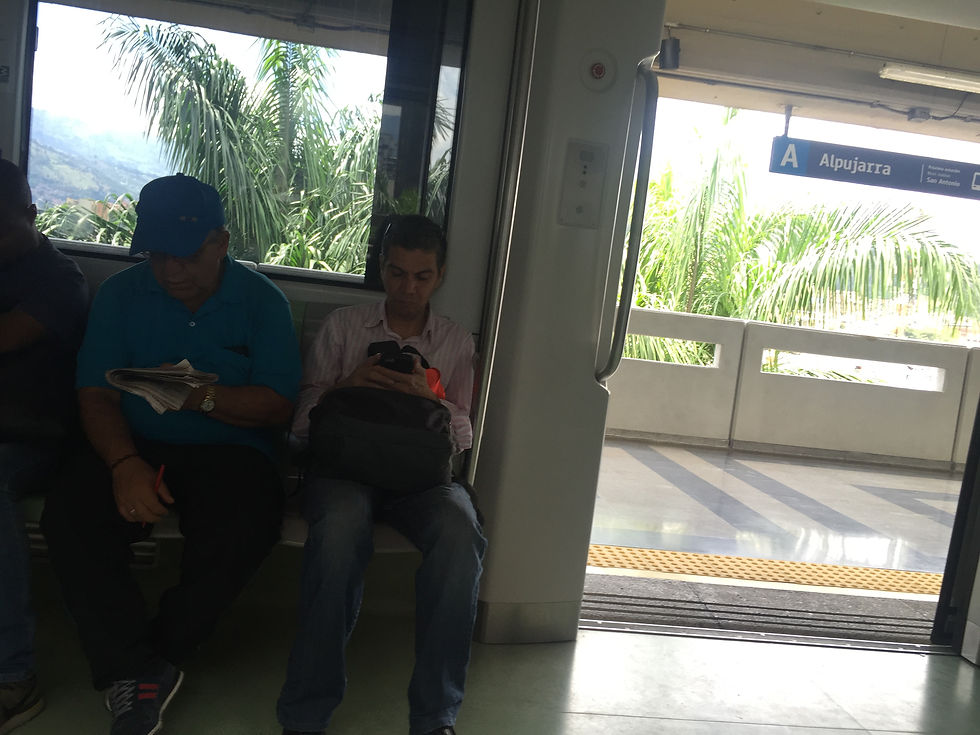
Medellin Metro System

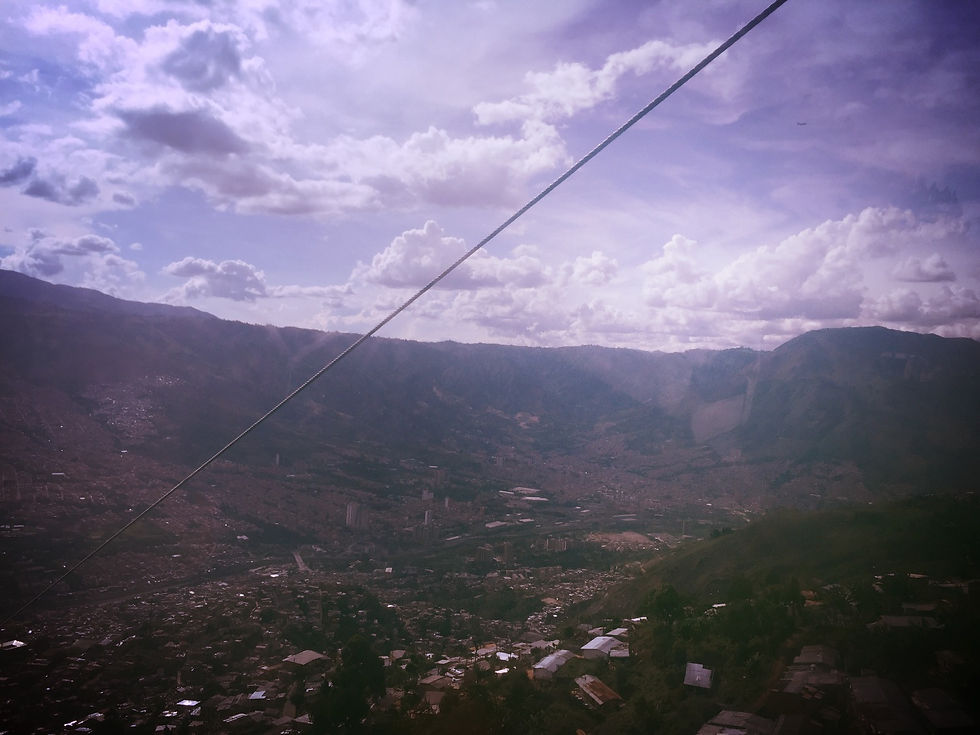
Views from the Cable Car
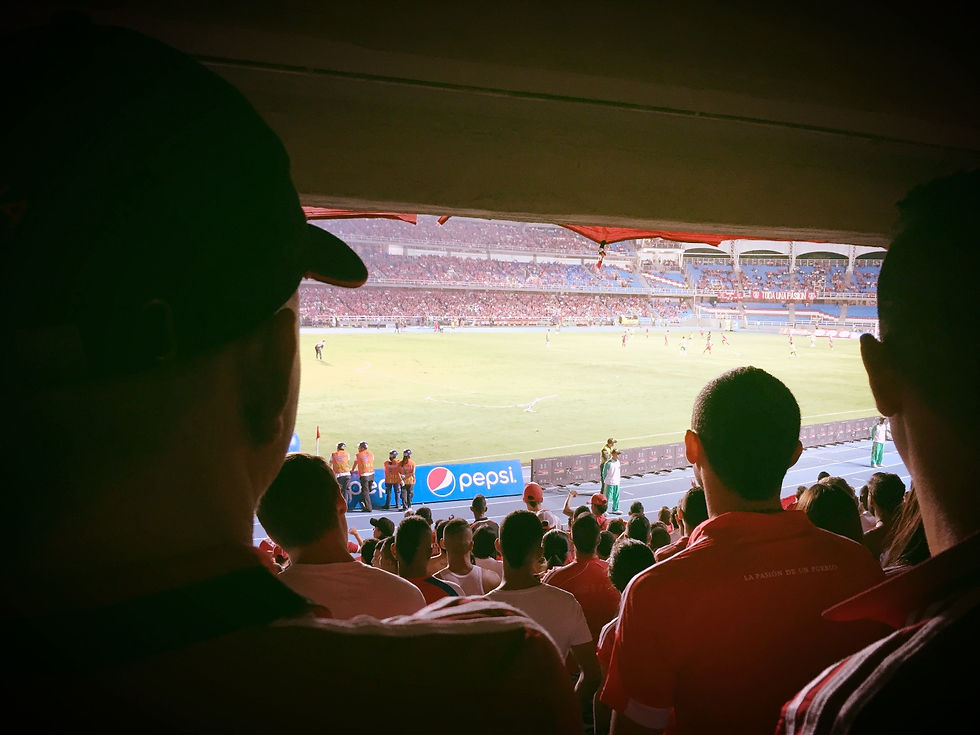
For the love of god, go to a soccer game and enjoy the experience of being searched by Colombian police at the entrance
Guatapé
As soon I had entered Colombia, I'd begun to hear rumors that you could go play paintball at Pablo Escobar's Lakehouse in Guatapé. It was the site of a joint operation by the Cali Cartel and the CIA in which the house was bombed. The paintball operation is supposedly run by the caretaker of the house that worked for Pablo Escobar himself.
Just show up at Lake View Hostel and you'll be carted off to Escobar's lake house. It is in total disrepair and feels eerie, exactly how you would imagine a place that had been bombed in the middle of a party. The pool was green and the tiles cracked. Vines grew out of the bombed walls. Escobar's motorcycle is still parked above the garage.

You will split up into two groups: the Medellín cartel and the Cali cartel. One person is assigned to be Pablo Escobar. Cali, for the uninitiated, was a rival cartel closer to the border with Ecuador. Cali is famous for its unrivaled salsa clubs and is well worth a visit. For those that are Medellín, you have control of the house, where you can shoot from the open bones of old windows and hide at the top of the stairs. You have one mission: protect Pablo. The Cali cartel, conversely, will be trying to take over the house and assassinate Pablo Escobar.
You may then retire to the bar above the garage and look out at the beautiful lake over a cold Pilsen.

The whole experience was extremely surreal, and felt like the sort of thing that will cease to exist once there is a bit more oversight in Colombia. That's my favorite kind of experience travelling. Everything about the Pablo Escobar travelling experience in Colombia has that illicit, controversial feeling to it that characterizes most kinds of blatant exploitation. And it also feels fascinating and important to understand.
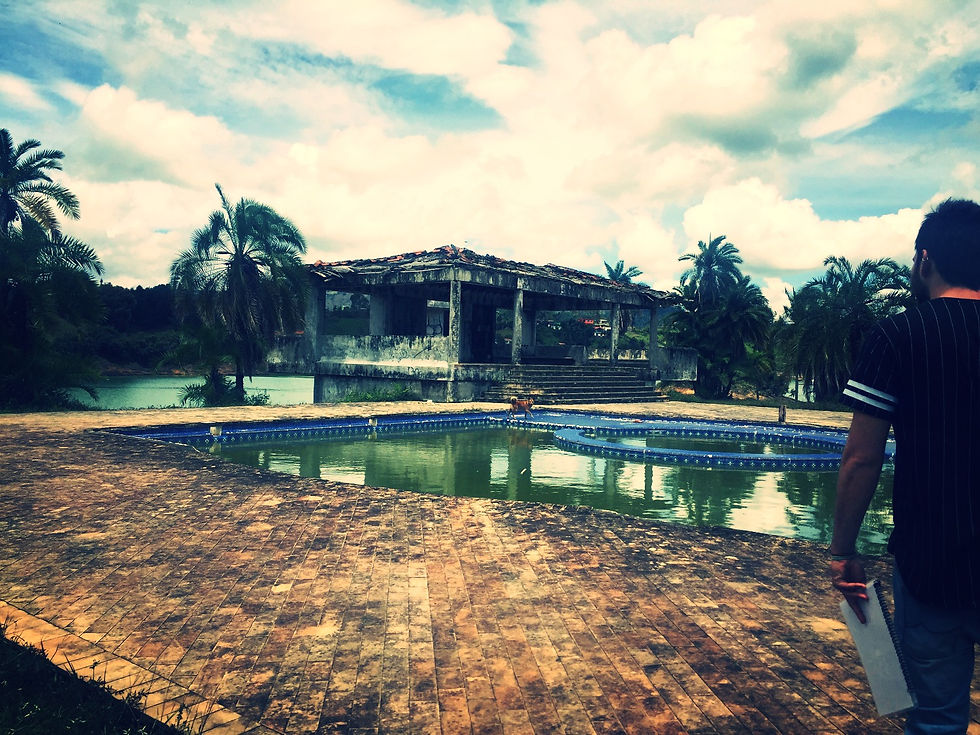
Hacienda Napoles
You can also travel to Escobar's famous mansion situated halfway between Medellín and Bogotá. This is where his zoo was housed, as well as his private bullfighting arena. It is now a theme park, zoo, and museum.
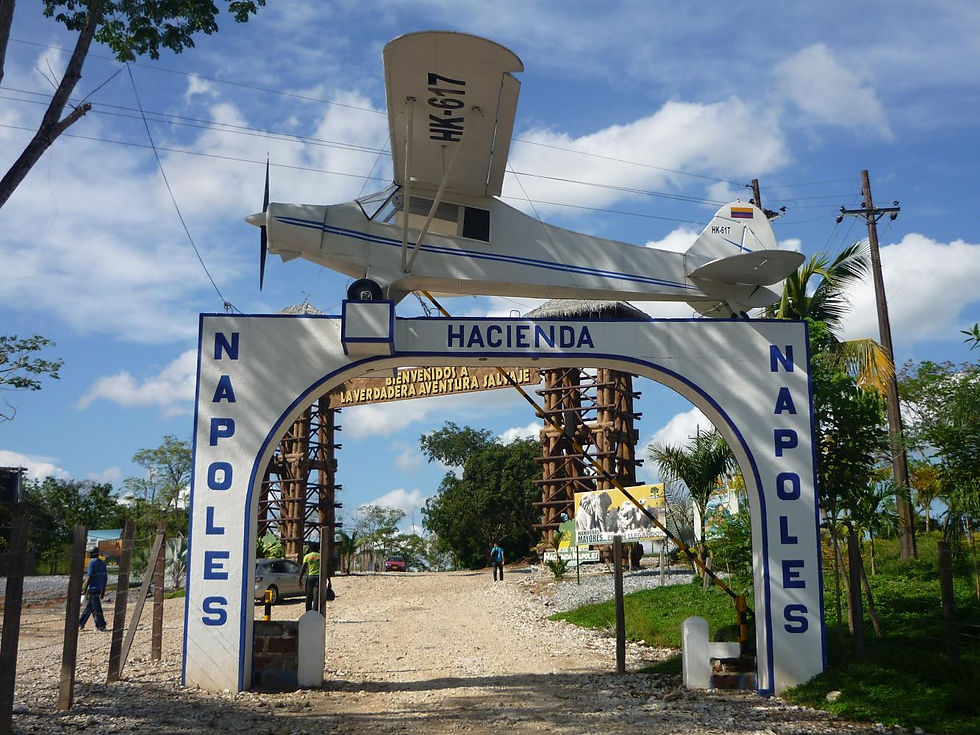
This is also the site of the great hippo escape that has been plaguing Colombia's countryside for the last decade. All of the hippos, descened from El Viejo, the first male hippo that Escobar bought for his zoo, have now populated nearby lakes and rivers. I know, it seems almost too poetic to be true.
San Augustin
And finally, the most problematic opportunity that travellers gossip about along the way. In San Augustin, you can cook your own cocaine. It is widely known, and anyone can go try their hand at it. There are several "tour guides" that will take you to one of the people in the area who will teach you how. Of course, there are inherent dangers when doing something like this in another country (or any country for that matter). You could get robbed, you could be arrested and forced to pay a bribe, or you could simply be refused. It has become a prevalent enough phenomenon, however, that it's accessible to anyone with even an ounce of common sense.
This is the point at which the "Pablo Escobar tourism" crosses over into actual cocaine production. Can this be written off as wanting to understand the dark underbelly of Colombia's history? Or is it more likely just a bunch of twenty-somethings wanting try to purest cocaine they'll ever get? Either way, I don't think that you will be able to experience this side of Colombia for much longer.
#pabloescobar #colombia #paintball #medellin #guatape #cocaine #sanaugustin #napoles #haciencanapoles #lakeviewhostel #hippos #zoo #backpacking #travelling




Comments